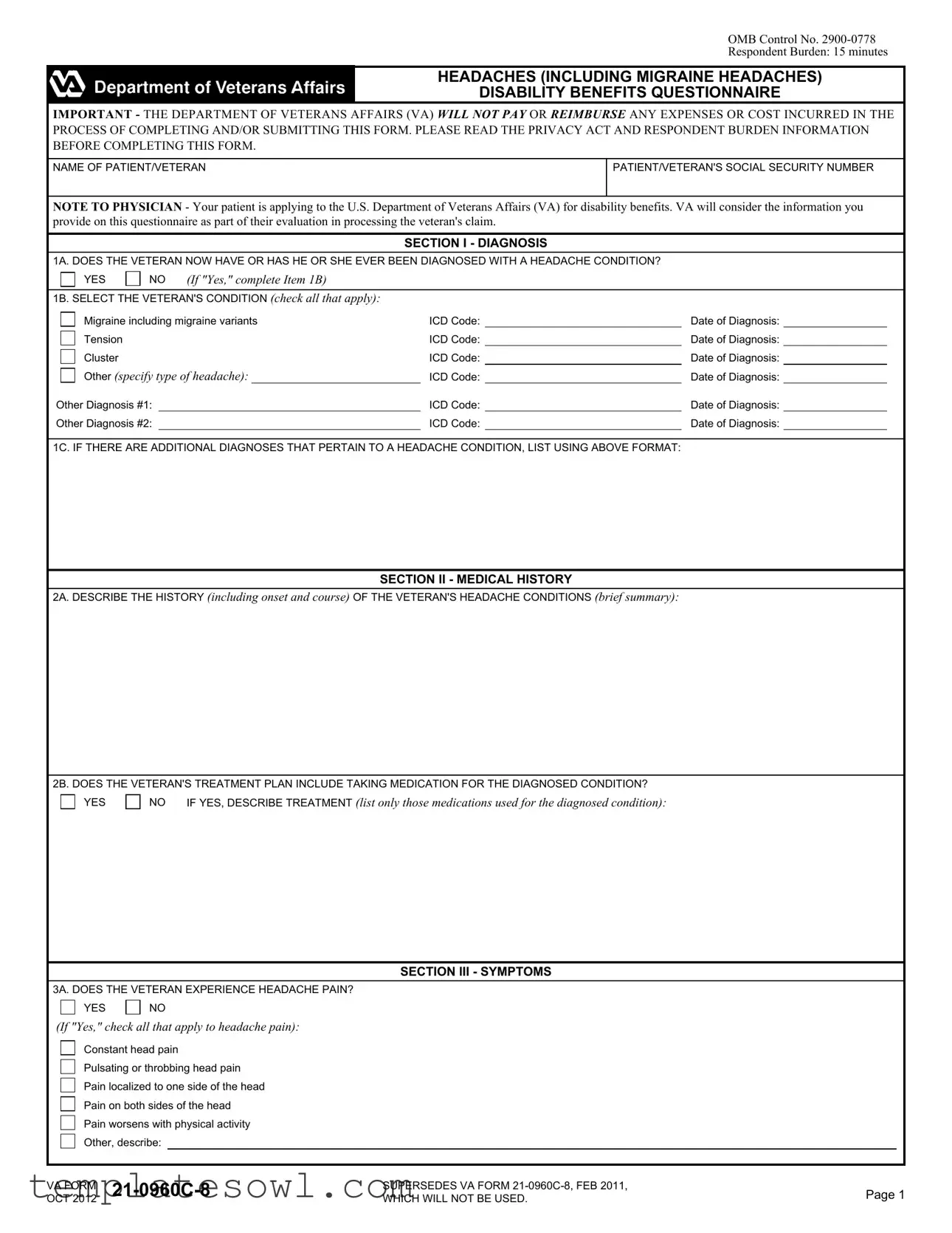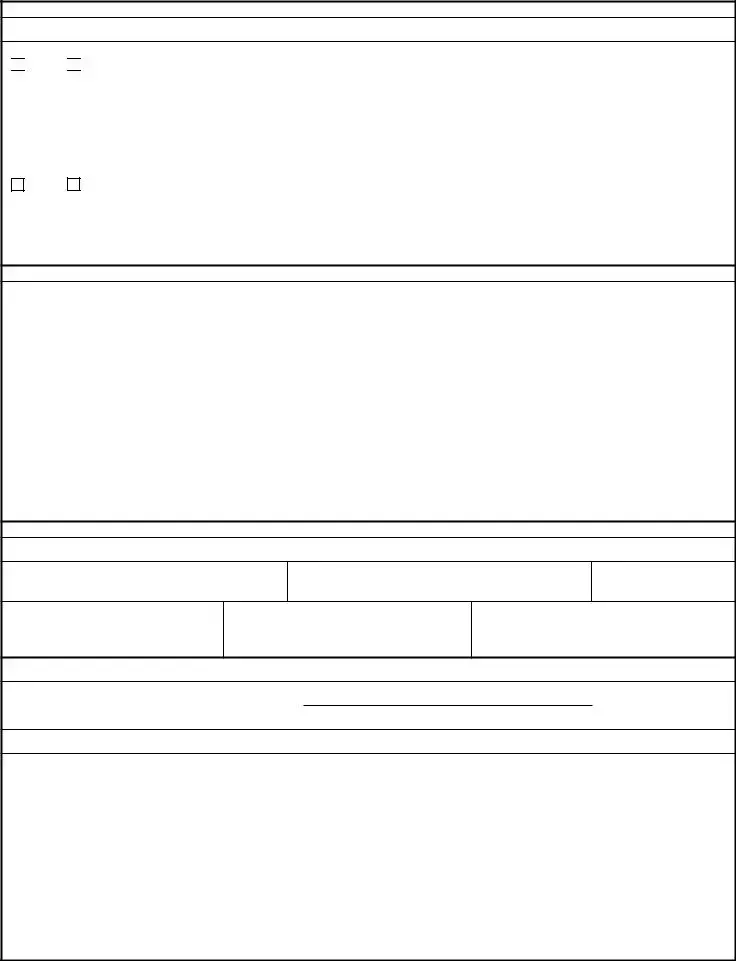(If "Yes," check all that apply):
Nausea
Vomiting
Sensitivity to light
Sensitivity to sound
Changes in vision (such as scotoma, flashes of light, tunnel vision)
Sensory changes (such as feeling of pins and needles in extremities)
Other, describe:
3C. INDICATE DURATION OF TYPICAL HEAD PAIN
Less than 1 day 1-2 days
More than 2 days Other, describe:
3D. INDICATE LOCATION OF TYPICAL HEAD PAIN
Right side of head
Left side of head
Both sides of head
Other, describe:
SECTION IV - PROSTRATING ATTACKS OF HEADACHE PAIN
4A. MIGRANE - DOES THE VETERAN HAVE CHARACTERISTIC PROSTRATING ATTACKS OF MIGRAINE HEADACHE PAIN?
YES 
 NO
NO
(If "Yes," indicate frequency, on average, of prostrating attacks over the last several months):
Less than once every 2 months
Once in 2 months
Once every month
More frequently than once per month
4B. DOES THE VETERAN HAVE VERY FREQUENT PROSTRATING AND PROLONGED ATTACKS OF MIGRAINE HEADACHE PAIN?
|
|
YES |
|
NO |
|
|
|
|
|
4C. NON-MIGRAINE - DOES THE VETERAN HAVE PROSTRATING ATTACKS OF NON-MIGRAINE HEADACHE PAIN? |
|
|
YES |
|
NO |
|
|
|
(If "Yes," indicate frequency, on average, of prostrating attacks over the last several months):
Less than once every 2 months
Once in 2 months
Once every month
More frequently than once per month
4D. DOES THE VETERAN HAVE VERY FREQUENT PROSTRATING AND PROLONGED ATTACKS OF NON-MIGRAINE HEADACHE PAIN?
YES 
 NO
NO
SECTION V - OTHER PERTINENT PHYSICAL FINDINGS, COMPLICATIONS, CONDITIONS, SIGNS AND/OR SYMPTOMS
5A. DOES THE VETERAN HAVE ANY SCARS (surgical or otherwise) RELATED TO ANY CONDITIONS OR TO THE TREATMENT OF ANY CONDITIONS LISTED IN DIAGNOSIS, SECTION 1?
YES 
 NO
NO
(If "Yes," are any of the scars painful and/or unstable, or is the total area of all related scars greater than or equal to 39 square cm (6 square inches))?
YES 
 NO
NO
(If "Yes," also complete VA Form 21-0960F-1 Scars/Disfigurement Disability Benefits Questionnaire.)
5B. DOES THE VETERAN HAVE ANY OTHER PERTINENT PHYSICAL FINDINGS, COMPLICATIONS, CONDITIONS, SIGNS AND/OR SYMPTOMS RELATED TO ANY CONDITIONS LISTED IN SECTION 1, DIAGNOSIS?



 NO
NO

 NO
NO
 NO
NO
 NO
NO
 NO
NO

 YES
YES 
 NO
NO